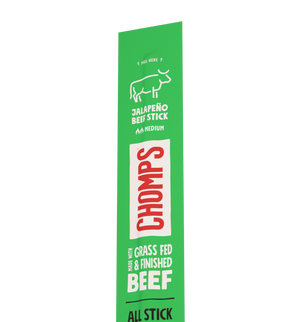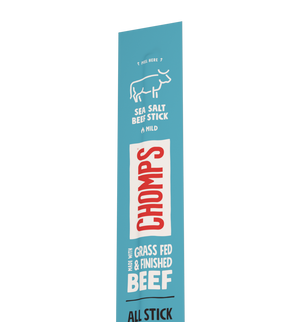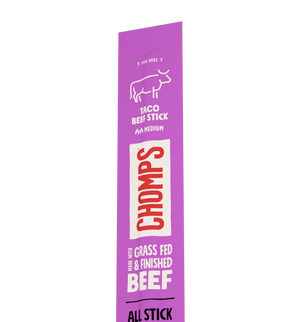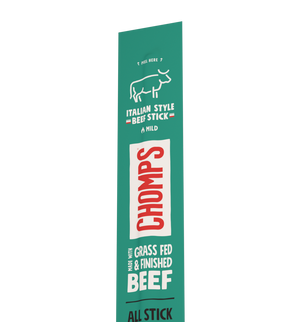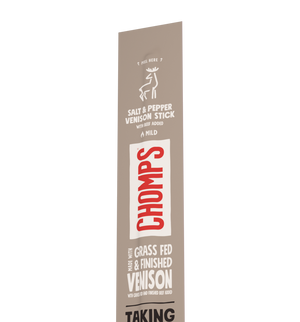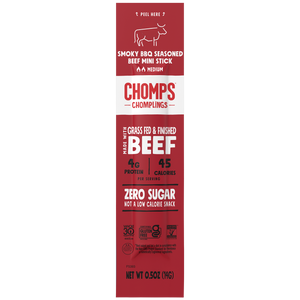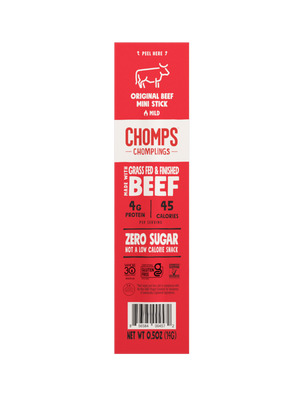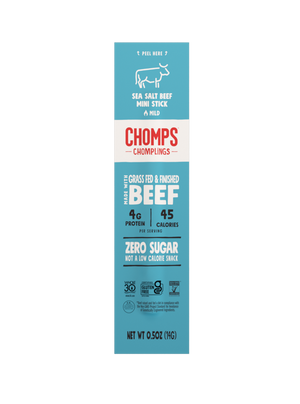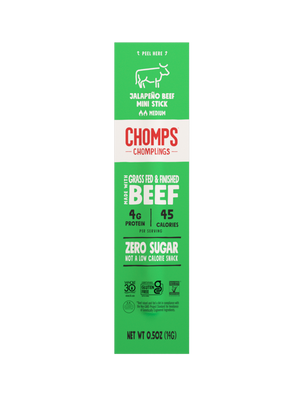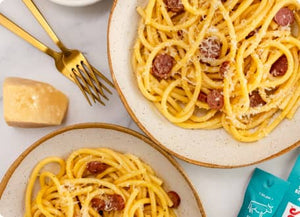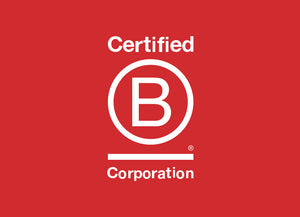The time has come for you to go on a gluten-free diet plan. You could have been diagnosed with celiac, discovered a gluten sensitivity, or are just curious about how it will make you feel. Regardless of how you got here, we're going to demystify the whole process of planning a gluten-free diet plan for beginners.
Eating gluten-free is restrictive, but with the right tools, direction, and education, following an easy gluten-free diet is possible. All you need is the right knowledge and preparation!
We're going to walk you through a comprehensive gluten-free diet plan for beginners:
-
What gluten actually is
-
The purpose of a gluten-free diet
-
What you can and can't eat
-
Tips for eating gluten-free
-
A sample gluten-free menu
-
Strategies for successful gluten-free meal planning
-
A gluten-free shopping list
What Is Gluten?
Gluten is a collection of proteins found in cereal grains. While most often associated and found within bread, there are a variety of products, ingredients, and additives that contain gluten.
Gluten creates the "elastic" texture that we all know and love in bread. Gluten is also found in many sauces, ingredients, and additives. It originally comes from the Latin word for "glue".
When flour is mixed with water, those classic strands begin to form and strengthen. A lot of baking is focused on promoting gluten strands for texture — e.g. the autolyse step when baking sourdough is specifically designed to promote gluten by giving time for the flour and water to mix together.
An easy gluten-free diet plan aims to reduce inflammation and other negative symptoms like fatigue by eliminating gluten from every aspect of your diet. That means getting rid of all products or ingredients that are derived from wheat, barley, spelt, or rye.
Eating gluten-free is most associated with people who suffer from Celiac disease, have a gluten sensitivity, or have a wheat allergy.
Celiac affects around 1 in 100 people around the world, and gluten sensitivity, while the data is still lacking, is believed to affect people 0.5% - 6% of people.
Celiac is a disease where your body's immune system gets confused and chooses to attack gluten, resulting in damage to your gut and causing symptoms like diarrhea, constipation, stomach pain, tiredness, and more. Gluten sensitivity, on the other hand, is when your body has difficulty digesting gluten and makes you feel bloated, gassy, or fatigued after eating products with gluten.
Your irritation could also be due to a wheat allergy, which reacts to the proteins found within gluten instead of initiating an incorrect response as Celiac does.
The reality is, most people have no issues eating gluten.
One 2015 study found that 93% of people who thought they were sensitive to gluten could tolerate it, so while eliminating gluten from your diet can be a useful exercise to determine personal sensitivity, chances are that outside of an official diagnosis, gluten is not what is affecting you negatively. Keep this in mind as you step into your gluten-free lifestyle! [1]
Adjust your gluten-free diet according to your needs.
If you have celiac, then your need to follow a gluten-free diet plan is strict, but if you suspect you have a sensitivity then you may try eliminating gluten from your diet temporarily to see if your symptoms improve. If they do, then you can consider an easy gluten-free diet in small amounts or when you're okay with the consequences.
A 7-Day Gluten-Free Meal Plan
Let's get cooking on that gluten-free meal plan! Here is a full week of gluten-free snacks and meals you can take and run with.
Each of these is safely free from gluten and absolutely delicious. Use these to take some of the mental load off of yourself.
Now that you understand the basics, let’s dive into a simple 7-day gluten free diet plan for beginners.
Monday
-
Breakfast: Diced and skillet-roasted sweet potatoes, 2 eggs over medium, and spinach.
-
Lunch: Chicken house salad with a lime vinaigrette.
-
Snack: Apple
-
Dinner: Slow-roasted salmon with mashed potatoes and asparagus.
Tuesday
-
Breakfast: Bacon and eggs with berries on the side.
-
Lunch: Fruit smoothie with protein powder.
-
Snack: Banana
-
Dinner: Meatloaf with mashed cauliflower and roasted zucchini.
Wednesday
-
Breakfast: Avocado toast on gluten-free bread.
-
Lunch: Lentils over rice.
-
Snack: Celery with peanut butter
-
Dinner: Steak tacos with sour cream, avocado, and queso fresco.
Thursday
-
Breakfast: Tofu scramble with diced red peppers and tomatoes.
-
Lunch: Chicken salad over arugula.
-
Snack: Gluten-free jerky sticks
-
Dinner: Thai chicken coconut curry.
Friday
-
Breakfast: Breakfast sausage with diced onions, eggs, and fresh fruit.
-
Lunch: Greek yogurt with oats, berries, peanut butter, and agave.
-
Snack: Plantain chips
-
Dinner: Greek chicken with tabouli.
Saturday
-
Breakfast: Cheesy scrambled eggs with avocado and gluten-free bread.
-
Lunch: Quinoa salad.
-
Snack: Beet crackers
-
Dinner: Chicken and broccoli with roasted carrots.
Sunday
-
Breakfast: Gluten-free cereal with almond milk.
-
Lunch: Baked falafel with olives and fresh greek salad.
-
Snack: Rx Bar
Dinner: Bunless burgers with grilled corn and sweet potato fries.
This complete gluten-free diet plan for beginners offers variety while keeping you safely gluten-free.
Gluten-Free Meal Plan Tips
Now that you know what you can and can't eat, let's get practical. Here are a few tips on how to transition and succeed with an easy gluten-free diet plan:
1. Buy as natural and fresh as possible.
If you know exactly what you're eating, it's easier to know if it has gluten hidden or not. To make the most of your gluten-free meal plan, stick to fresh vegetables, local protein, and natural foods and you'll be in a good spot.
2. Stick to foods with as few ingredients as possible.
Similarly, the more ingredients that are packed into a product, the higher chance it has additives or other ingredients that may include gluten. In general, opt for fewer ingredients in your gluten-free meal plan.
3. Always look for the GF certification.
Train your eye to look for gluten-free certification, which is a stronger standard than simply "gluten-free" as determined by the FDA. This means the company has gone through third-party testing and is committed to its gluten-free practices.
4. Use extra caution when eating out.
Ask specific questions and if you aren't sure or if the waiter/chef isn't positive, change your order to something you can trust.
5. Read every food label.
This is the most important habit you can get into. There is no replacement for always checking the ingredients!
6. Buy a cookbook to make your life easier.
Take some of the thinking out of gluten-free meal planning. Buying a gluten-free cookbook that has a mix of easy and more challenging recipes for your gluten-free meal plan.
7. Build your gluten-free diet into your travel plans.
Remember that different countries aren't guaranteed to be as accommodating. Make sure you and your travel partners account for this when arranging your travel plans.
8. Know your relative risk and plan accordingly.
Someone with celiac will have a much different mindset to making a gluten-free meal plan than someone who has gluten sensitivity. Draw your own lines and stick to them.
9. Don't be afraid to bring your own food to social events.
It can be socially awkward at times, but let the hosts know that you can always bring your own food if what they plan on cooking isn't gluten-free. A good way to make this less awkward is to say, "is it okay if I bring something over to heat up in your oven?" That way it feels like you are cooking together.
10. Use caution with canned, frozen, and other preserved foods.
These are the #1 culprits for gluten-containing additives. Try to avoid processed foods in general, but if you have a soft spot or are in a hurry just take a look at the label to maintain an easy gluten-free diet.
11. Buy a separate toaster and kitchenware if need be.
If your threat level warrants cross-contamination concerns, consider buying a separate toaster for your house. Choose a different color and designate one toaster for regular bread and the other for gluten-free items. You could do the same with cutting boards, knives, etc.
12. Take advantage of existing resources.
Tap into the amazing wealth of resources already available to you. Here are few of our favorites to get you started on a gluten-free diet meal plan:
-
The Gluten Free Scanner - A fantastic app that lets you scan barcodes and see if it’s gluten-free.
-
The Gluten Free Shoppe - An online marketplace with all sorts of gluten-free products.
-
Celiac Disease Foundation - The authoritative resource on celiac disease and gluten-free living.
-
Flippin' Delicious - Great gluten-free recipes.
Okay, now onto the best part — the food you can eat on a gluten-free diet meal plan!
Gluten-Free Diet Meal Plan: What You Can and Can't Eat
Depending on your body, eating gluten-free may help your digestive system feel better, reduce inflammation, increase your energy, and help you lose weight.
We're going to cover in detail the foods you can't eat, the foods you can eat, how to develop your label-reading skills, and go over some useful resources you can rely on in a pinch when tackling gluten-free meal planning.
Foods You Need to Avoid
Gluten-free meal planning can be simple, but here are the general food categories and specific types of food you need to avoid entirely unless it is specifically labeled as gluten-free. Keep in mind that not all foods clearly contain gluten. Companies aren't required to put whether or not a product contains gluten, but they do have to meet certain standards if they elect to put gluten-free on their label.
These days you can find gluten-free versions of most major foods, but in general, the foods listed below in their typical or natural state are not gluten-free and should be removed during a gluten-free diet.
-
Fundamental gluten-containing ingredients: wheat bran, wheat flour, spelt, durum (pasta/macaroni), kamut (oriental wheat), semolina (purified wheat), triticale (a wheat and rye hybrid), malt, brewer’s yeast.
-
All wheat products and bread: this means pastries, cake flour, pizza crusts, crackers, pretzels, pasta, cookies, seitan, cereal, cakes, etc.
-
All fried foods made with wheat flour: fried chicken, catfish, falafel, mozzarella sticks, etc.
-
Most candy and sweets: any sort of breaded candy or supermarket candy usually has gluten in it. Baking mixes and fillings are also not allowed.
-
Most frozen, canned, and preserved foods: creamy canned soups, salad dressings, broths, frozen dinners, etc.
-
Beer and other gluten-based drinks: this includes ales, lagers, and flavored alcoholic beverages.
-
Most preserved sauces and salad dressings: soy sauce, teriyaki sauce, fish sauce, oyster sauce, salad dressings, and BBQ sauces often have added gluten. Be extra careful of these at restaurants!
These are broad categories, but in general, you should be highly suspicious of anything that falls within those categories. Understanding what you can and cannot eat is essential for creating an effective gluten-free diet meal plan.
You should also avoid eating food on a gluten-free meal plan that may have gluten-containing additives. Here are a few of the most common additives and enhancers you’ll see in supermarkets:
-
Protein additives: such as hydrolyzed wheat protein, wheat protein, hydrolyzed plant protein, hydrolyzed vegetable protein, and textured vegetable protein (TVP).
-
Texture additives: such as flour, emulsifier, food starch, modified food starch, dextrin, maltodextrin, and vegetable gum.
-
Flavor enhancers: such as artificial flavors, spices, miso, natural flavor, smoke flavor, nondescript "seasonings", and vegetable broth.
Not all of these additives will have gluten, but many of them do. These are very common in frozen foods and other processed items, so if you don’t see gluten-free on it, then go ahead and skip it.
Gluten-Free Foods You Can Eat
I know after reading that list you may feel like there isn't a lot you can eat, but that couldn't be further from the truth. It is possible and easy to eat well on gluten-free meal plans. Here is everything that is available to you.
-
Red meat: Ground beef, ribs, steaks, and others.
-
Poultry: chicken, turkey, etc.
-
Pork: sausage, bacon, etc.
-
Seafood: Oysters, clams, tuna, and all others.
-
Tofu: This does not include fried tofu if made with wheat flour.
-
Eggs: Any sort of egg is fair game — just use gluten-free toast.
-
Dairy: Watch out for additives and preservatives in flavored versions.
-
All fruits and vegetables: Anything naturally grown in the ground or on a plant is fair game.
-
Legumes: peas, peanuts, and all beans.
-
Nightshades: potatoes, eggplants, tomatoes, peppers, etc.
-
Grains: rice, quinoa, corn, oats, tapioca, etc.
-
Nuts and seeds: almonds, sunflower seeds, peanuts, walnuts, and others.
-
Almond milk and other milk alternatives: soy milk, coconut milk, almond milk, oat milk, and more.
-
All vegetable oils and butters: If you're reusing oil make sure it wasn't used to fry gluten-containing foods.
-
All normal herbs and spices: Paprika, cumin, salt, pepper, and all major spices are fine.
-
Pure chocolate: Anything that is strictly chocolate is okay to eat.
-
Kombucha: All types of kombucha should be fine without any additives.
-
Soda: All major sodas are okay as long as you don't notice any of the additives above in them.
-
Water: Water is always okay to drink.
-
All juices: Skip the preservative-filled cheap juices but drink all the fresh juice you can get your hands on!
-
Coffee: You will have to skip the graham cracker sprinkled pumpkin spiced lattes, but coffee, in general, is just fine.
See? There is so much for you to enjoy on a gluten-free diet plan for beginners. All you have to do is get creative! Next, we’ve pooled together some of the best tips for making your transition into a gluten-free meal plan a success.
Gluten-Free Shopping List
Here's a proposed shopping list for two people following a gluten-free diet plan for beginners. Mix and match this as you see fit, and try to walk into the grocery store with at least 1-2 recipes in the back of your mind.
Meat/Proteins:
-
2 lbs chicken or one whole chicken
-
2 lbs ground beef
-
1 lb fresh deli meat (check for gluten)
-
1 package of bacon
-
2 packages of extra firm tofu
Fruits & Vegetables:
-
1 bunch of asparagus
-
1 bunch or bag of spinach
-
Arugula
-
Shredded carrots
-
4 limes
-
2 lemons
-
5 bananas
-
4 apples
-
1 lb blueberries
-
4 potatoes
-
2 zucchinis
-
1 head of cauliflower
-
Green onions
-
Cilantro
-
Parsley
-
1 red onion
-
1 yellow onion
-
3 avocados
Pantry:
-
Canned chickpeas
-
Black beans
-
Corn tortillas
-
Balsamic vinegar
-
Maple syrup
-
Oats
-
Chia Seeds
-
Sun-dried tomatoes
-
Jarred olives
-
Pickles
-
2 garlic heads
-
Hot sauce
-
2 cans crushed tomatoes
-
2 cans coconut milk
Dairy:
-
Butter
-
Mexican cheese
-
Feta cheese
-
Almond milk or whole milk
-
Dozen eggs
-
Greek yogurt
-
Sour cream
Spices & Oils:
-
Extra virgin olive oil
-
Salt
-
Pepper
-
Paprika
-
Vegetable oil for higher heat cooking
-
Cumin
-
Sugar
The Bottom Line
Gluten is a collection of proteins found in cereal grains, bread products, additives, preservatives, and other miscellaneous ingredients, and eating gluten-free is a common lifestyle change for anyone suffering from celiac, gluten sensitivities, and wheat allergies.
Eating a gluten-free diet meal plan is mostly achieved by avoiding bread and other wheat products, but you do need to be careful about gluten hiding in preservatives, additives, etc.
The good news is that gluten-free meal planning is far from tasteless! There are amazing ways to cook and snack gluten-free (including eating beef jerky sticks from CHOMPS). You'll be happy to find that many of your favorite foods are still an option for you.
Use this guide and grocery list as a starting point. With a gluten-free diet plan for beginners, you’ll be equipped to navigate your new lifestyle with confidence. And remember that a little preparation goes a long way when starting a new diet.
References
[1] Capannolo, Annalisa et al. “Non-Celiac Gluten Sensitivity among Patients Perceiving Gluten-Related Symptoms.” Digestion vol. 92,1 (2015): 8-13. doi:10.1159/000430090


